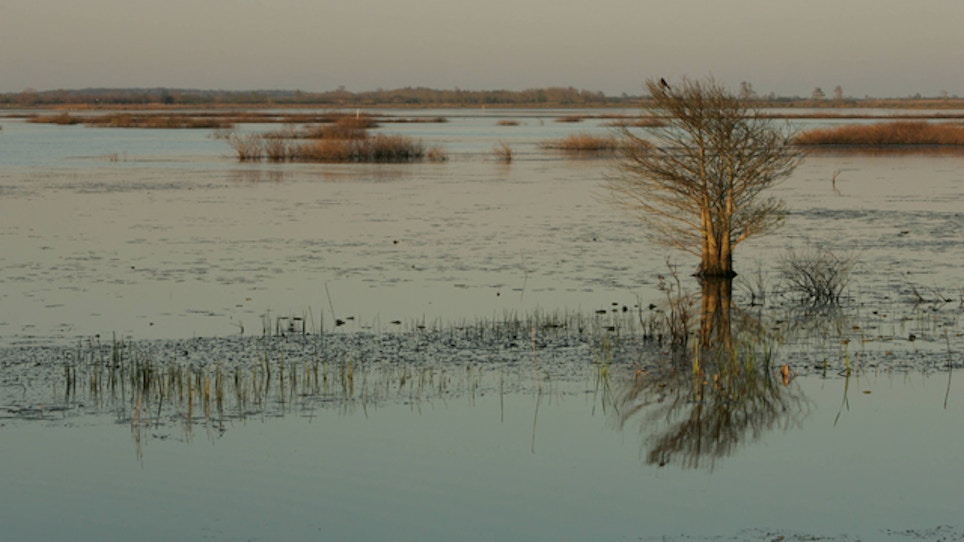By MARK SCHLEIFSTEIN | The Times-Picayune
NEW ORLEANS (AP) — Bounty hunters have made significant progress in getting rid of one of the biggest culprits blamed for Louisiana's rapidly eroding coastline: the nutria. During the 2012-13 hunting season, hunters used rifles, shotguns and traps to kill 388,160 of the four-legged, orange-toothed critters that love to eat wetland grasses down to the roots, according to a report delivered to a federal-state coastal restoration task force on Thursday.
State biologists estimate that as many as 18 nutria per acre can be found in some coastal marshes, where the vegetarian rodent, originally from Argentina, has caused circular "eat-outs," destroying vegetation and leaving sediment that washes away during storms.
Nutria can grow to 20 pounds and 24 inches long; females often have two litters a year averaging 4.5 babies. Both males and females reach breeding maturity in nine months.
In Jefferson Parish, nutria populations in suburban drainage canals were causing so much damage that then-Sheriff Harry Lee sent his deputies out in flatboats to shoot them.
The animals were believed to have been imported to Louisiana for the fur trade in the 1930s and eventually made their way into the wild, where their population threatened and then displaced muskrats.
For years, the fur trade resulted in some control of the nutria population, with an estimated average 1.3 million nutria harvested annually between 1962 and 1982. But the fur trade took two major hits during that era, animal rights activism reduced the demand in the United States for furs and the failure of the Russian economy after the fall of the Soviet Union resulted in a drop-off in demand for fur in that country.
By the late 1990s, state officials were estimating that as many as 6 million nutria were living in coastal wetlands, and ranked the species among the largest causes of coastal erosion. A 1998 coastwide survey estimated that the rodents' munching had damaged an estimated 90,000 acres.
In 1998, the state got federal funding to conduct a test bounty program, paying hunters to kill the animals, allowing them to keep the meat and fur, and turn in only the animal's long tail as proof of the kill. That became an annual program paid for by the Coastal Wetlands Planning, Protection and Restoration Act in 2002.
This year, the bounty program paid $5 a tail, for a total of $1.94 million, to 252 hunters, with about 42 percent of the participants each turning in 800 tails or more. About 3.3 percent of the animals were used for meat or fur, down from 4 percent last year. The rest were disposed of by methods approved by the state, with more than 315,000 buried.
Most of the animals, about 36 percent, were caught in Terrebonne Parish. Hunters caught about 22,000, or 6 percent, in Plaquemines Parish.
An annual survey of wetlands damage in St. Mary and Terrebonne parishes found an 8 percent increase in damage, though, which Louisiana Department of Wildlife and Fisheries biologist Jennifer Manuel attributed to a single landowner who prohibited hunters from using airboats on the property.
But coastwide, the total damage represented only 4,624 acres of wetlands, compared with 82,080 acres when the program began in 2002, and 97,271 acres during the first year of the original bounty test program, 1999-2000.
While most nutria collected under the program are being harvested in eastern parishes, Manuel said the program has begun targeting some areas in the central and western part of the state, including the Marsh Island State Wildlife Refuge.
She said state officials conducting the aerial damage survey also were able to spot the effects of another growing animal pest: feral hogs. "From the air, you can tell the difference," Manuel said. "The hog damage looks like they've tilled the marsh, while with the nutria, it looks like the marsh is mowed flat."
———
Information from: The Times-Picayune, www.nola.com






